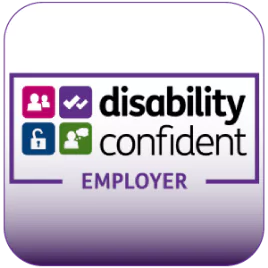2021 saw a large number of employees leave their roles voluntarily in a labour market shift dubbed ‘the great resignation’. November ONS figures revealed that job-to-job moves reached a record high of 979,000 between July and September, with statisticians confirming the increase was down to resignations rather than dismissals.
Such data suggests that the great resignation is no longer a prediction, and employees now feel more empowered than ever to walk away from their jobs and search for new opportunities. The impact of Covid-19 and various sociopolitical factors are thought to be the main reasons why people are re-evaluating their careers and work-life balance, with analysts advising that employers will see more resignations as we enter the third year of the pandemic.
Despite the current challenges, employee turnover has always been a crucial issue for organisations to tackle. Employees resign for many different reasons, whether it’s down to external factors like personal relocation or something internal that pushes them out, like a lack of feeling valued at work.
“A one-two punch”
According to a Gallup report, the number one reason employees leave a job is due to a bad boss or immediate supervisor. It states: “Having a bad manager is often a one-two punch: Employees feel miserable while at work, and that misery follows them home, compounding their stress and putting their wellbeing in peril.”
With retention heavily reliant on management relationships, organisations are increasingly investing in training for leaders and hiring managers that enables them to engage and support their teams effectively. Here, we look at some of the critical employee touchpoints where hiring managers can positively impact engagement, and how they can help to improve retention across organisations.
1. Candidate attraction
Building the groundwork for employee engagement starts as soon as someone connects with an organisation as an applicant. Rather than creating job descriptions that consist only of list of requirements, employers should communicate the business’ goals and how the prospective employee will contribute to reaching them. The application stage should be a two-way process, with employers outlining the benefits of working at the organisation, and providing a dedicated contact should the individual have any questions about the role before applying.
2. Hiring
Communication throughout the recruitment process is vital to ensure applicants remain engaged. Across the current market, it’s likely that job seekers will be engaging with multiple organisations simultaneously, so your organisation needs to stand out for the right reasons.
While talent acquisition and HR teams often handle the majority of the recruitment process, hiring managers are encouraged to keep in touch with candidates between an offer being made and the start date. This is a typically the time when candidates may receive counteroffers, so building rapport early can be beneficial in boosting engagement and building loyalty.
3. Onboarding
During the onboarding process, employees connect to company culture, processes, colleagues and managers. At this time, an employee will determine whether they see themselves staying at the company long-term or not, so it’s crucial to have a compelling and consistent onboarding experience to keep engagement high and turnover rates low. Onboarding should begin before the employee joins, with regular touchpoints and, at the very least, a schedule outlining their first day, week, and month. A clear plan will help make new employees feel welcome from the outset. Where possible, direct line managers should facilitate the onboarding process to help new hires assimilate to the company and build that all-important connection early.
4. Mentoring
Mentors help people learn the ropes, develop relationships and identify skills that should be developed or improved. The benefits of mentoring are two-fold; they help motivate mentees by connecting them with those who have more experience while also reinforcing the value and hard-earned expertise of mentors. Additionally, mentoring helps build solid relationships in the workplace, which positively impacts engagement and productivity.
5. Culture
To reduce employee turnover, managers must first understand why people are leaving. So many assume they know, but don’t really know. The CIPD’s annual Talent and Resource Planning Survey developed in partnership with Omni, reported only 27% collect data to identify retention issues and only18% calculate the cost of labour turnover. So understanding this and the connection to culture is critical.
Having consistent, regular touchpoints with employees helps to equip managers with a real-time data and information on the happiness and wellbeing of a team. Encouraging open and honest communication allows managers to address issues and take action before they become problems. It works both ways; employees feel comfortable to share their thoughts or issues, and managers can effectively delegate and explain the rationale behind any process updates or changes.
Retain your best talent
When it comes to developing an effective and engaging resourcing and retention strategy, it can be challenging to know where to start or what’s important to your organisation now and in the future. Following extensive research, along with our partnership with the CIPD and its annual Talent and Resourcing Survey, Omni has developed the Resourcing Effectiveness Assessment (REA), which will support you on this journey.
Our REA will Audit where you are now, Assess against your own and other industries and then take the necessary Action to develop a strategy that will help you attract and retain the talent you need now and in the future. Find out more about undertaking an REA for your organisation, or get an insight into what to expect by completing a free mini REA today.









